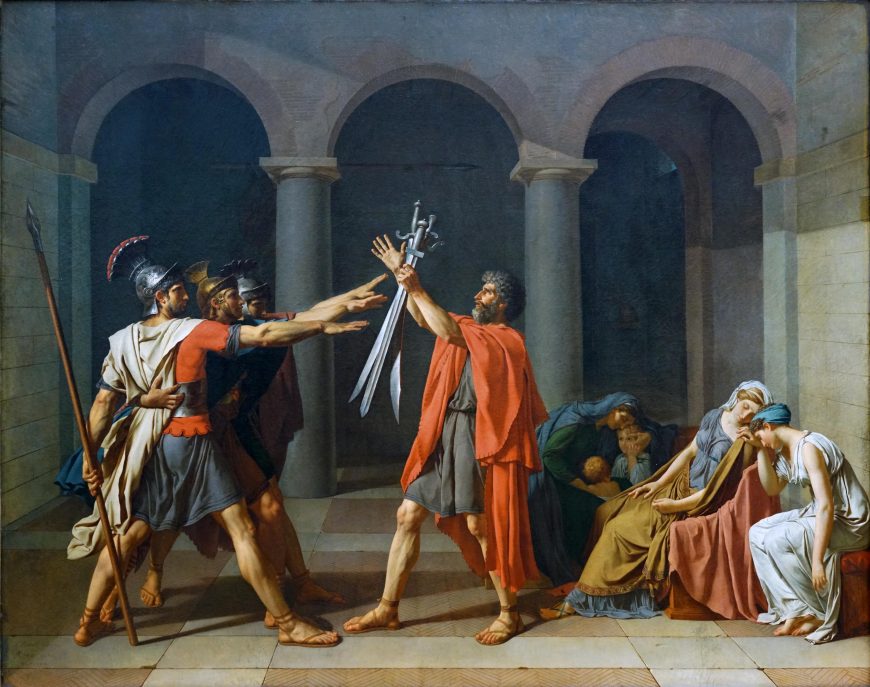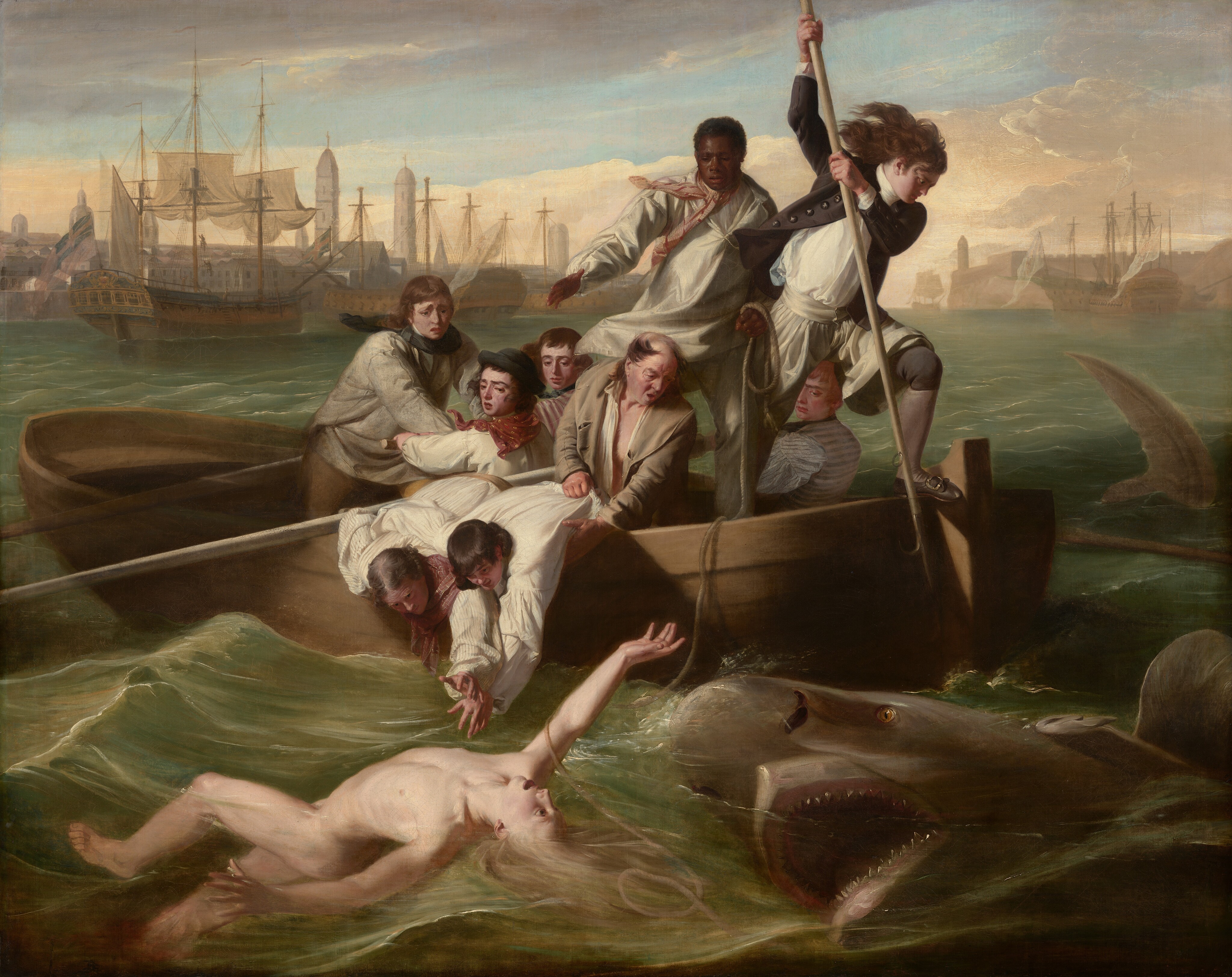Morality and Art in the Classical Era
The issue of morality in art is a well-worn battlefield. The discussion of what is good or right to be depicted comes up again and again in history. Whether it's for religious, political, or personal reasons, there is always someone with an opinion.
Rococo
The same was true during the classical period. The earlier art movement of the time was dubbed 'Rococo', which was art depicting an idealized form of the world and its people that did not have much if any basis in reality. It was characterized by a mostly light color palate and lighthearted depictions of mythic and religious material as well as regular people.
La Camargo Dancing, 1730, by Nicolas Lancret painted in Paris, France
This painting shows a variant of the Rococo style called fêtes galantes. It often depicted finely dressed people frolicking in green nature scenes. The woman in the white dress is the natural focal point of the painting. All heads are turned towards her and the bright color of her garments makes her stand out against the dark greens of the background and the reds and yellows of the people around her. Nothing particularly is happening in this scene to elicit emotion. It is merely a pretty scene with pretty people. I may own a copy of this work, but it's not my favorite example of this kind of art, so I would likely pass it up for a version that more appealed to me.
Neoclassical
The later movement was called Neoclassicalism and was developed as a counter to the Rococo style, which was seen as a moral breakdown of the aristocratic people. Instead, the people turned their interests towards creating and patronizing works that showcased good morals and historical events. Much of it was inspired by Greek and Roman style, coinciding with archaeological finds of Herculaneum and Pompeii.

Oath of the Horatii, 1784, by Jacques-Louis David painted in Rome.
Perhaps the most famous example of Neoclassical art is of Oath of the Horatii. The men in this painting are pledging to fight to the death for Rome. The men are tense and linear. They project masculine, somber self-sacrifice, which were desirable traits. The compositional elements are arranged in a triangular point through the upheld arms of the men. The devastated figures of the women and children are a stark contrast to the stoic faces of the men who are soon to die. The eye is drawn right towards the bright red cloak the man holding the swords has on as well as the shirt of the brother closest to the viewer. Perhaps it represents the bloodshed that will happen later. I would not own a copy of this work. I think it would be most impressive to view in a museum surrounded by related works. As separated as we are from this story, I think it would be best to have a plaque explaining the story beside the painting as context is sorely needed.

Watson and the Shark, 1778, by John Singleton Copley painted in London, England.
This painting is of a story where a boy (Brook Watson) went for a swim and got attacked by a shark, only saved by the heroic actions of the people in the boat. Saving someone's life is quite a noble deed, so it is no wonder that this is a prominent example of good morals in art. This one deviates from the Roman theme because it is from a more recent story that took place in Cuba. This one also has a triangular composition, with the tip of it being the harpoon the man is hoisting to stab the shark. The lighting is dramatic and the colors solemn. The boy is brightly illuminated, setting him apart from the darker colors of the water. The people on the boat have heroic poses, each working to save Watson either by maneuvering the boat, attacking the shark, or reaching for the boy. I might own a copy of this work. I like the expressions on the people's faces and the mighty stances they all have. It's just so dramatic.
References
Hi, I love the details on "Watson and the Shark". Brook Watson being at the mercy of a dangerous shark is definitely tied to mortality. Watson is definitely the center of attention, he's one of two characters in the painting that we see their whole body. All of the people on the boat have large portions of their bodies obscured. I love how you went in order of Rococo paintings to Neoclassical paintings.
ReplyDeleteI chose La Camargo Dancing as well! The bright color of her garments makes her stand out against the setting of the background and the man with her. It's like she's the spotlight of everything. The man in the knight gear closest to the viewer is drawn toward the center, as are the ones in the background and those surrounding the man wearing the vivid red cloak and wielding the sword. The tone in this painting gives off a calm feeling. This artwork makes me feel tense because the men are linear and masculine, both of which are good qualities presented in this artwork. I admire the looks on people's faces and how firmly they all stand. The people inside the boat are the center of attention because of to the dark tones and gloomy color scheme. The boy stands out from the darker hues in this painting.
ReplyDeleteHello, I like your selection of the arts particularly embraced with Watson and the Shark Yes I agree with the theme of good morals in society however would not keep it in my album because will gives me nightmares and have a phobia for waters and heights
ReplyDeleteOath of the Horatii also came out clearly in your explanation and I pity the women and children because they are hit by any war I don't like the war but will keep the art unlike you is good.
I really love your opening statement about the morality of art and how everyone has an opinion. I honestly think that is what makes art so great. It is a controversy and movement starter and a significant part of peoples culture. Opinion is what drives all of these things.
ReplyDeleteMy favorite piece of art in your "gallery" is the last one. I feel as if it tells a whole story, it reminds me of something Shakespeare would wright. I can see the creativity and ideas of this time period flowing of of this piece
Hi, I love your take on the Oath of Horattii. We both tackled this piece during our analysis and found different meanings for different reasons. The devastation on the women's faces as their sons prepare for war depicts the self-sacrifice of the families supporting such endeavors. It is the mothers who raise their sons for war.
ReplyDelete